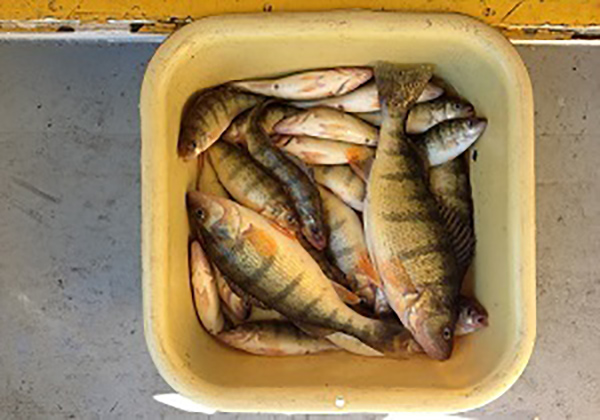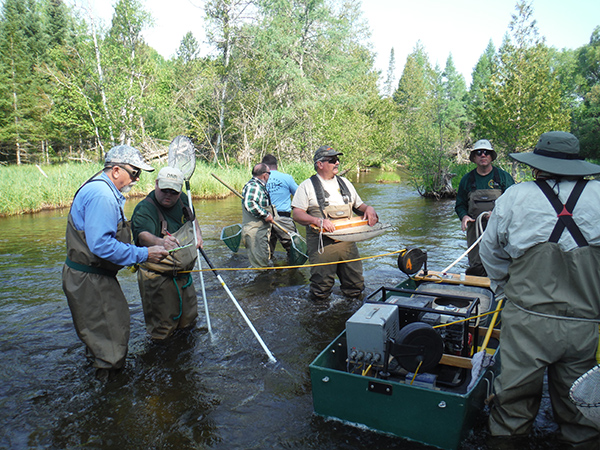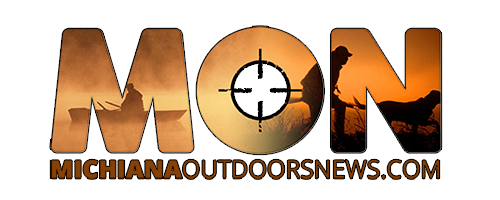- Details
MDNR Report
 Anglers Reminded of Michigan's Perch Limit Reduction
Anglers Reminded of Michigan's Perch Limit Reduction
If you're planning to fish for yellow perch this spring, keep in mind that there's a new daily possession limit - 25 fish, reduced from 50 - starting April 1 on nearly all state waters.
Exceptions include:
- Lake Erie, which will retain a 50-fish daily limit.
- Lake Gogebic in Gogebic and Ontonagon counties, which will have the 25-fish daily limit, but with no more than five of those fish being 12 inches or longer.
The Michigan Natural Resources Commission approved the proposed fishing regulation change late last year, after extensive public and scientific reviews. The new regulation is effective with the start of the 2019 Michigan fishing season.
The DNR collected many comments from concerned anglers and others interested in reducing the daily possession limit for yellow perch. Lowering the statewide daily possession limit also supports consistent yellow perch regulations across waterbodies, particularly connecting waters, tributaries and drowned river mouths.
"The major goal for lowering the yellow perch daily possession limit was to better achieve an optimal balance between conservation and fishing opportunity, reflecting the importance and popularity of yellow perch in Michigan," said Christian LeSage who works for the DNR's Aquatic Species and Regulatory Affairs Unit. "Yellow perch are among the most sought-after game species in Michigan, and we want to ensure generations of anglers can continue to enjoy fishing for them."
- Details
There's no shortage of recreational opportunities to explore - and what better time to do so than the 2019 Winter Free Fishing Weekend!
The 2019 Winter Free Fishing Weekend will be held Feb. 16-17. As part of these weekends, all fishing license fees are waived for two days with residents and out-of-state visitors allowed to enjoy fishing on all waters for all species during their respective open seasons. Please note all other regulations still apply.
To encourage involvement in Free Fishing Weekends, organized activities are often offered in communities across the state. These activities are coordinated by non-profit groups, schools, parks (local/state), businesses and others.
If you would like to plan an event, check out www.Michigan.gov/freefishing for information and resources to help! On the site you'll find two toolkits; one focused on planning and the other on promoting your event.
Once your event is coordinated, please register it as an official 2019 Winter Free Fishing Weekend activity online at https://www.research.net/r/2019WinterFFW-registration. Upon doing so you will be contacted about receiving a packet of materials from Fisheries Division to use during your event.
- Details
MDNR Report
 DNR Director Daniel EichingerGov. Gretchen Whitmer recently announced appointments for several state agencies, including Daniel Eichinger, who joins the DNR as the department's new director.
DNR Director Daniel EichingerGov. Gretchen Whitmer recently announced appointments for several state agencies, including Daniel Eichinger, who joins the DNR as the department's new director.
Eichinger most recently served as executive director of Michigan United Conservation Clubs, the nation’s most effective state-based conservation organization. In that role, he led MUCC’s return as a driving force for conservation and our outdoor heritage. Under his leadership, MUCC revamped its organizational structure, grew membership and launched new programs to connect people with nature.
From 2007 to 2012, he worked in various capacities with the Department of Natural Resources, first as legislative liaison, where he was heavily involved in passing the innovative Recreation Passport to fund state parks. Later, he helped establish the first Policy and Regulations Unit for the agency’s Wildlife Division.
Gov. Whitmer called Eichinger "a trusted leader in the conservation of Michigan’s abundant natural resources and outdoor heritage" and someone who "has the broad experience needed to bring innovative ideas and also successful implementation of conservation efforts and recreation opportunities here in the state.”
Eichinger, who holds bachelor’s and master's degrees in fisheries and wildlife from Michigan State University, as well as a master’s of public administration, is eager to get started in this new role.
“Conservation is a team sport," he said. "I look forward to working with our partners to continue the thoughtful stewardship of the extraordinary natural and cultural resources that so deeply define us as Michiganders.”
- Details
By Louie Stout
Kudos to Michigan legislators for passing a law that prohibits the Michigan DNR from issuing any more game sterilization permits to cities.
It’s hard to imagine such a bill is necessary, but the DNR gave Ann Arbor such a permit a few years back that allowed the city to sterilize whitetail deer.
The new legislation put a moratorium on the practice until April 1 2022, giving the state time to study the effectiveness of the Ann Arbor project and find “more suitable ways” to manage urban deer herds.
- Details
MDNR Report
 What Happened to the Au Sable North Branch Trout Population?
What Happened to the Au Sable North Branch Trout Population?
When last winter finally relented, and anglers were able to get out and enjoy fishing their favorite spots, the DNR Fisheries Division’s Northern Lake Huron Management Unit started getting phone calls from concerned anglers about their lack of success on the North Branch of the Au Sable River.
The unit receives “there are no fish in my lake” calls on a regular basis, and usually they are based on an angler’s couple of days of poor fishing. This year on the North Branch, however, staff received calls from professional trout fishing guides who had never complained about the fishing before. They told local staff they were experiencing extremely low catch rates and weren’t seeing the feeding activity they normally would during insect hatches.
The North Branch was scheduled for Fisheries Division to conduct population estimates in the late summer at three different sites. However, with the number of anglers reporting startlingly low catch rates of trout, the division decided to conduct electrofishing spot checks on May 30.


